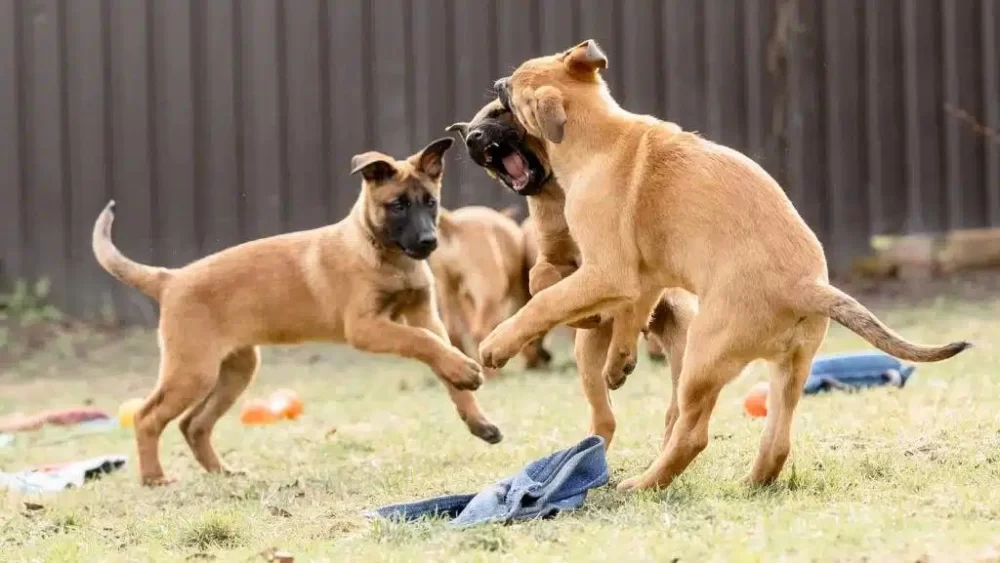How to Socialize a Puppy with Other Dogs: A Step-by-Step Guide
Raising a puppy is an exciting and rewarding journey, but there’s one important skill you’ll need to teach them to ensure they grow into well-behaved adults: how to socialize with other dogs. Socializing your puppy early on can make a huge difference in their overall behavior and temperament. But, just like anything with dogs, the process needs to be handled carefully, so your puppy learns the right lessons. In this article, I’ll walk you through the steps I took to successfully socialize my own puppy, and share some tips that can help make the process smoother for you.
1. Start Socializing Early: The Puppy Window
When I first brought home my puppy, Milo, I was eager to make sure he grew up confident and comfortable around other dogs. Experts agree that the best time to start socializing a puppy is between 3 and 14 weeks of age. During this “critical socialization period,” puppies are more open to new experiences, which makes it easier for them to develop positive associations with other dogs.
For Milo, I started introducing him to other dogs right away, in controlled, low-stress environments. At first, we simply met a few calm, friendly dogs at a local park. Milo was a little shy at first, but with gentle encouragement and positive reinforcement, he began to enjoy these encounters. I made sure to keep the interactions brief and non-threatening, ensuring Milo had the space to approach other dogs at his own pace.
2. Take it Slow: The Importance of Gradual Introductions
One of the biggest mistakes I see new puppy owners make is rushing the socialization process. While it might seem tempting to introduce your puppy to as many dogs as possible right away, this can overwhelm them and set back their progress. I learned early on that it’s crucial to take things slow and give your puppy time to adjust.
When I introduced Milo to my friend’s dog, Daisy, we took a careful approach. First, we allowed them to sniff each other through a fence or a gate. This gave them both the chance to get a sense of each other’s scent without the pressure of a direct face-to-face meeting. Over time, we gradually increased the level of interaction, starting with parallel walks and moving on to controlled playdates once they were both comfortable.
During these initial interactions, I was always watching closely for signs of stress from either dog. If either Milo or Daisy started to feel overwhelmed, we would take a step back and give them some space to calm down before continuing. Patience is key when it comes to socializing puppies!
3. Positive Reinforcement: Rewarding Good Behavior
One of the most effective tools I used when socializing Milo was positive reinforcement. Puppies learn best when they associate good behavior with rewards. Each time Milo had a successful interaction with another dog, I would reward him with praise, treats, or a favorite toy. Over time, he began to associate meeting other dogs with positive experiences, making him more excited and less anxious about future encounters.
I also made sure that Milo’s encounters with other dogs were fun and stress-free. The goal is to create a positive association with being around other dogs, not to push them into uncomfortable situations. For example, when we met a new dog at the park, I’d play fetch with Milo afterward, giving him a chance to focus on something fun rather than the new dog.
4. Observe Body Language: Reading Your Puppy’s Signals
Being able to read your puppy’s body language is crucial during socialization. Puppies, like adult dogs, communicate through their body language, and it’s essential to understand their signals so you can prevent negative experiences. I learned early on that signs of fear or discomfort in Milo—like tucking his tail, cowering, or growling—meant that he needed more space or a break from the interaction.
On the other hand, when Milo wagged his tail or had an eager, relaxed stance, I knew he was enjoying the interaction and could continue. Pay attention to your puppy’s signals and always ensure that the experience remains positive and comfortable for them. Never force a meeting if your puppy is clearly anxious or frightened.
5. Puppy Classes: A Controlled Environment for Socialization
Another great option for socializing your puppy is enrolling them in a puppy socialization class. I decided to sign Milo up for a local puppy class, and it was one of the best decisions I made. These classes are designed to provide a safe and structured environment for puppies to interact with other dogs under the supervision of experienced trainers.
In the class, Milo was able to meet puppies of similar age and temperament, which made the experience less overwhelming for him. The trainers also helped guide the interactions, ensuring that all puppies were comfortable and that any signs of aggression or anxiety were addressed promptly. Puppy classes are a great way to ensure your puppy is exposed to various dog breeds and temperaments in a safe and supportive environment.
6. Consistency is Key: Socialization Should Be Ongoing
Socialization doesn’t stop once your puppy has met a few dogs; it’s an ongoing process. As your puppy grows, they will encounter new situations and new dogs, and it’s important to continue reinforcing positive social behaviors. I made it a point to regularly arrange playdates for Milo with dogs he had met in puppy classes or at the park. The more experiences he had, the more confident he became around other dogs.
Even as an adult dog, Milo continues to benefit from regular socialization. Whether it’s meeting a new dog at the dog park or going on a walk where we encounter other dogs, I make sure to maintain a consistent routine of positive dog interactions. This helps reinforce his good behavior and ensures that he stays well-socialized and comfortable in any situation.
7. Know When to Seek Professional Help
While most puppies will adjust to socialization with proper guidance, some puppies may have more difficulty. If your puppy is consistently fearful, aggressive, or reactive to other dogs, it might be time to seek professional help. A certified dog trainer or behaviorist can offer personalized advice and techniques to help your puppy overcome their challenges.
When I first noticed that Milo was a little hesitant around larger dogs, I reached out to a professional trainer who helped me with strategies to build his confidence. With their guidance, Milo was able to become more comfortable around bigger dogs, and we continued working on his socialization together. Don’t be afraid to ask for help if needed—sometimes a little extra support can make all the difference!
Socializing a puppy is a rewarding and essential part of raising a happy, well-adjusted dog. By starting early, taking things slow, and using positive reinforcement, you can help your puppy become comfortable with other dogs and enjoy positive interactions throughout their life. Remember, every puppy is different, so it’s important to be patient and consistent as you guide your puppy through the socialization process.












